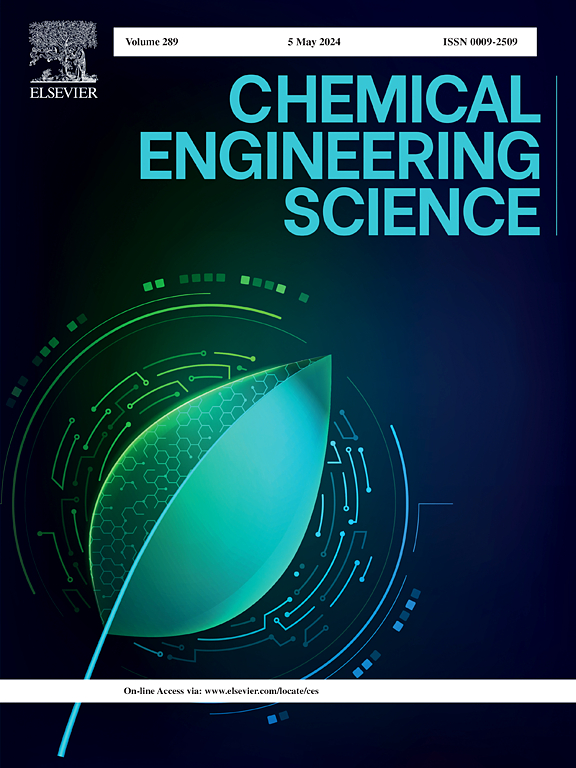Mass transfer for droplets and bubbles with a stagnant surfactant cap - an analytical solution of the advection-diffusion equation
IF 4.1
2区 工程技术
Q2 ENGINEERING, CHEMICAL
引用次数: 0
Abstract
The mass transfer rate to a liquid droplet or bubble, in motion in another immiscible fluid, is studied when the interface is partly covered by a stagnant surfactant cap. We present an analytical solution by solving the equations for advection diffusion under conditions of creeping flow and a thin concentration boundary layer. The empirical relation between the Sherwood number and drag coefficient for partly coated bubbles proposed in literature that accurately describes both experiments and numerical simulations of CO-release from a rising bubble follows from our analytical solution. Mass transfer and drag force are interrelated as demonstrated mathematically.This study improves the understanding of mass transfer to partly covered droplets and bubbles at time scales where these are created such as in processing equipment or microfluidic devices as well as for semi-stationary situations where partly covered bubbles or droplets exist as in froth flotation, bubble columns or extraction processes.

带有停滞表面活性剂帽的液滴和气泡的传质——平流扩散方程的解析解
本文研究了在另一种非混相流体中运动的液滴或气泡在界面部分被停滞的表面活性剂盖住时的传质速率。通过求解蠕变流动和薄浓度边界层条件下的平流扩散方程,给出了解析解。文献中提出的部分包覆气泡的Sherwood数与阻力系数之间的经验关系准确地描述了co22从上升气泡释放的实验和数值模拟,我们的解析解如下。传质和阻力是相互关联的,正如数学证明的那样。本研究提高了在时间尺度上对部分覆盖的液滴和气泡的传质的理解,如在加工设备或微流控装置中,以及在泡沫浮选、气泡柱或萃取过程中存在部分覆盖的气泡或液滴的半静止情况下。
本文章由计算机程序翻译,如有差异,请以英文原文为准。
求助全文
约1分钟内获得全文
求助全文
来源期刊

Chemical Engineering Science
工程技术-工程:化工
CiteScore
7.50
自引率
8.50%
发文量
1025
审稿时长
50 days
期刊介绍:
Chemical engineering enables the transformation of natural resources and energy into useful products for society. It draws on and applies natural sciences, mathematics and economics, and has developed fundamental engineering science that underpins the discipline.
Chemical Engineering Science (CES) has been publishing papers on the fundamentals of chemical engineering since 1951. CES is the platform where the most significant advances in the discipline have ever since been published. Chemical Engineering Science has accompanied and sustained chemical engineering through its development into the vibrant and broad scientific discipline it is today.
 求助内容:
求助内容: 应助结果提醒方式:
应助结果提醒方式:


